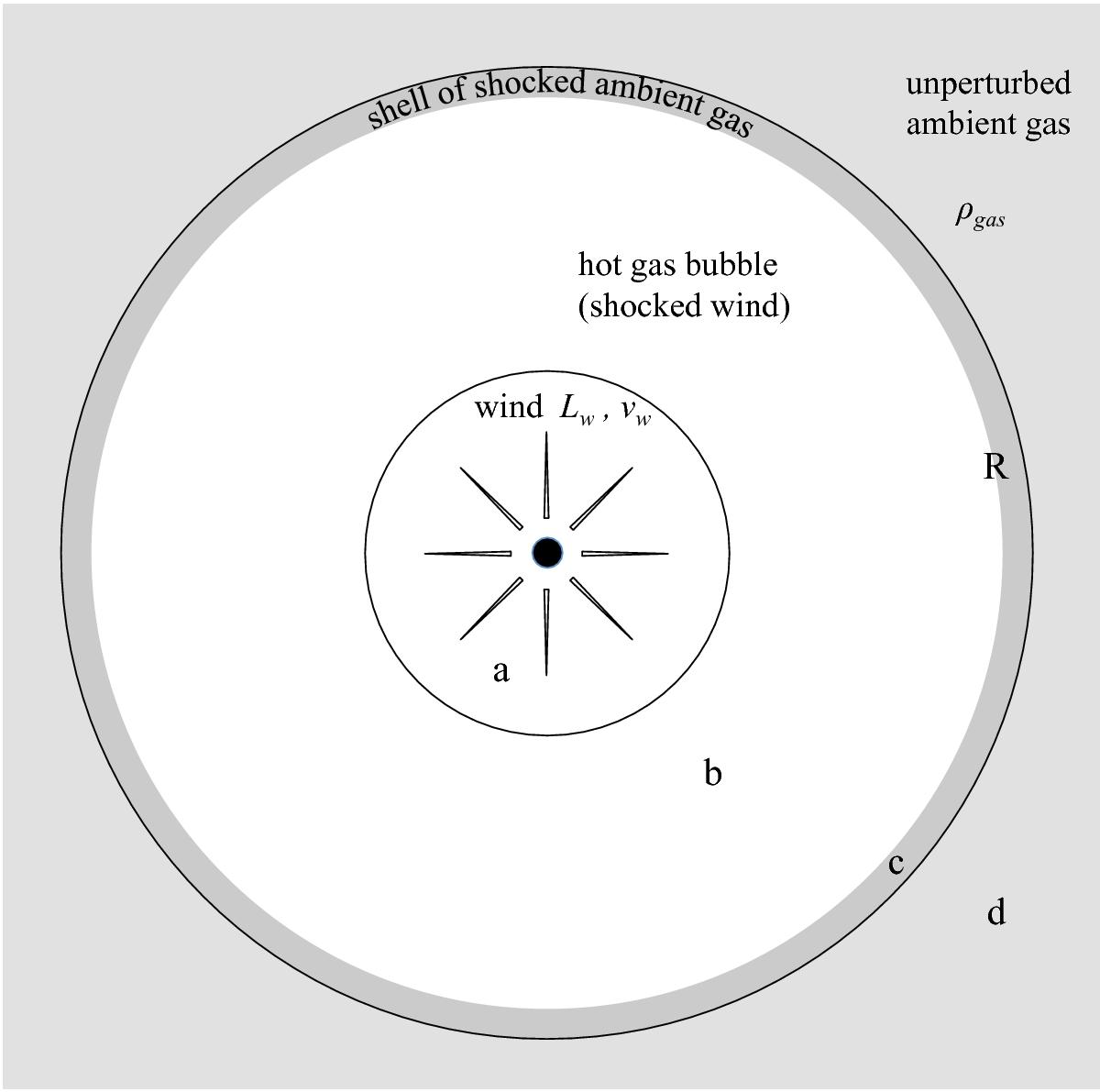Fig. 1

Classic structure of a spherical outflow produced by a fast, supersonic wind colliding into an ambient medium (see also Weaver et al. 1977; Dyson & Williams 199713; Costa et al. 2014). The flow is divided into four main regions labelled a, b, c, d. Region a is occupied by the QSO wind launched at a velocity vw and carrying a kinetic power Lw. A reverse shock between regions a and b shocks and heats the QSO wind. It is the cooling of the shocked wind in region b (the bubble) that determines whether the outflow is energy-driven (no cooling) or momentum-driven (instantaneous cooling). Region c is the thin shell of shocked ambient gas in pressure equilibrium with the gas in region b through a contact discontinuity. Region d shows the still unperturbed ambient medium with density ρgas where the outflow expands.
Current usage metrics show cumulative count of Article Views (full-text article views including HTML views, PDF and ePub downloads, according to the available data) and Abstracts Views on Vision4Press platform.
Data correspond to usage on the plateform after 2015. The current usage metrics is available 48-96 hours after online publication and is updated daily on week days.
Initial download of the metrics may take a while.


